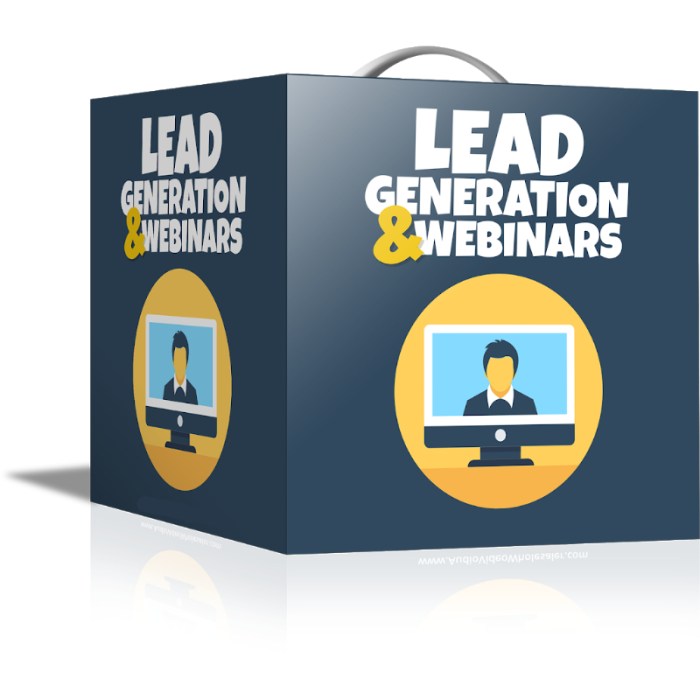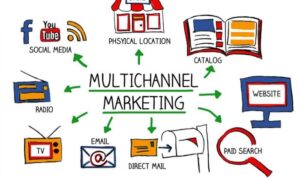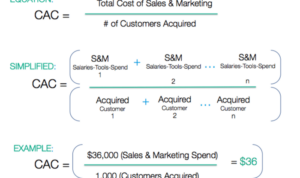Kicking off with Creating Webinars for Leads, this topic dives into the ins and outs of generating leads through engaging webinars. Get ready to learn about planning, content creation, promotion, participant engagement, and follow-up strategies.
Understanding Webinars
A webinar is a live online event where a host presents information or conducts a workshop to an audience that can interact through chat, polls, and Q&A sessions. The purpose of webinars in lead generation is to provide valuable content to potential customers in exchange for their contact information, such as email addresses, which can then be used for follow-up marketing efforts.
Webinars are a powerful marketing tool for several reasons. Firstly, they allow businesses to showcase their expertise and build credibility with their target audience. Secondly, webinars provide a platform for engaging with potential leads in a more interactive and personalized way compared to traditional forms of marketing. Lastly, webinars offer a cost-effective method for generating leads and nurturing relationships with prospects over time.
Benefits of Webinars for Lead Generation
- Webinars help in establishing thought leadership and expertise in a particular industry.
- They allow for direct engagement with potential leads, fostering trust and credibility.
- Webinars provide an opportunity to showcase products or services in a detailed and interactive manner.
- They help in qualifying leads by gauging interest and interaction during the webinar.
Examples of Successful Webinars
| Webinar Topic | Company | Number of Leads Generated |
|---|---|---|
| Mastering Social Media Marketing | ABC Marketing Agency | 500 leads |
| Financial Planning for Millennials | XYZ Financial Services | 300 leads |
| Health and Wellness Workshop | FitLife Wellness | 400 leads |
Planning Webinars
When it comes to planning webinars for lead generation, there are several key steps to consider. Choosing a relevant topic, setting clear goals and objectives, and ensuring engaging content are all essential components of a successful webinar strategy.
Choosing a Relevant Topic
To choose a relevant topic for a webinar, you should consider the interests and pain points of your target audience. Conducting market research, analyzing customer feedback, and staying up-to-date with industry trends can help you identify topics that will resonate with potential leads. Additionally, consider the expertise of your team and the value you can provide to attendees when selecting a topic.
Setting Goals and Objectives
Setting clear goals and objectives for your lead-generating webinar is crucial for measuring success and ROI. Determine what you hope to achieve with the webinar, whether it’s increasing brand awareness, generating leads, or driving conversions. Establish specific metrics to track, such as the number of attendees, engagement levels, or follow-up actions taken by participants. By defining your goals upfront, you can tailor your webinar content and promotional strategy to align with your objectives.
Creating Compelling Content: Creating Webinars For Leads

Creating engaging content for webinars is crucial to attract leads and keep participants interested throughout the session. One key element in creating compelling content is storytelling, which helps to captivate the audience and make the information more memorable. Structuring the content flow in a way that maintains participants’ engagement is also vital to ensure a successful webinar experience.
Importance of Storytelling in Webinar Content
Storytelling plays a significant role in webinar content by adding a human touch and emotional connection to the information being shared. It helps to break down complex concepts into relatable narratives that resonate with the audience. By incorporating real-life examples, case studies, or personal anecdotes, you can create a more engaging and impactful webinar that captures the participants’ attention.
- Use storytelling to create a narrative arc that builds suspense and keeps participants hooked.
- Personalize the content by sharing experiences or testimonials that add authenticity and credibility to your message.
- Integrate visuals, such as images or videos, to enhance the storytelling experience and make the content more visually appealing.
Structuring Content Flow for Participant Engagement
To maintain participants’ engagement throughout the webinar, it is essential to structure the content flow in a coherent and organized manner. Consider the following tips to create a seamless and engaging experience for your audience:
- Start with a compelling introduction that clearly Artikels the purpose and objectives of the webinar.
- Break down the content into digestible sections with clear transitions between topics to maintain the flow of the presentation.
- Incorporate interactive elements, such as polls, Q&A sessions, or live demos, to keep participants actively involved and encourage participation.
- Conclude the webinar with a strong call to action that prompts participants to take the next step, whether it’s signing up for a demo, downloading a resource, or contacting your sales team.
Promoting Webinars
To ensure the success of your webinar, it is crucial to effectively promote it to reach potential leads. Utilizing different channels and strategies can help maximize attendance and participation.
Identifying Channels for Promotion
- Utilize email marketing campaigns to reach out to your existing contacts and subscribers.
- Collaborate with industry influencers or partners to tap into their audience and promote the webinar.
- Utilize paid advertising on platforms like Google Ads or social media to reach a wider audience.
Role of Social Media
- Social media platforms like LinkedIn, Twitter, and Facebook can be powerful tools for promoting webinars.
- Engage with your audience by creating teaser posts, behind-the-scenes content, and interactive polls to generate interest.
- Utilize paid social media ads to target specific demographics and increase visibility.
Strategies for Increasing Attendance
- Offer early bird discounts or incentives to encourage early registration and commitment.
- Send out reminder emails leading up to the webinar to keep it top of mind for your audience.
- Host a pre-webinar Q&A session or a countdown event to build anticipation and excitement.
Engaging Participants

When hosting a webinar, it’s crucial to keep participants engaged to ensure they stay interested and get the most out of the session. By incorporating interactive elements and encouraging audience interaction, you can create a more dynamic and engaging experience for everyone involved.
Utilizing Interactive Elements
- Use polls to gather feedback and opinions from participants in real-time.
- Host Q&A sessions to address any questions or concerns that may arise during the webinar.
- Incorporate quizzes to test participants’ knowledge and keep them actively engaged.
Encouraging Audience Interaction, Creating Webinars for Leads
- Ask open-ended questions to spark discussions and encourage participants to share their thoughts.
- Invite participants to share their experiences or insights related to the webinar topic.
- Encourage feedback through chat or messaging platforms to gather valuable insights for lead generation.
Follow-Up Strategies
After hosting a successful webinar, it’s crucial to have a solid follow-up strategy in place to nurture leads and turn them into customers. This involves personalized communication and consistent engagement to keep the momentum going.
Email Marketing and Personalized Communication
One of the best practices for following up with leads is through email marketing. By sending personalized emails tailored to the interests and needs of each lead, you can continue to provide value and build a relationship over time.
- Send a thank-you email: Show appreciation to attendees for joining the webinar and offer additional resources or information related to the topic.
- Segment your email list: Divide leads into different segments based on their behavior and engagement during the webinar to send targeted messages that resonate with their interests.
- Provide valuable content: Share relevant content, such as blog posts, case studies, or whitepapers, to further educate leads and nurture them through the buyer’s journey.
Tracking and Measuring Success
Tracking the success of a lead-generating webinar is essential to understand what worked well and where improvements can be made for future webinars. By analyzing key metrics, you can optimize your follow-up strategies and maximize the impact of your lead nurturing efforts.
- Track email open rates and click-through rates: Monitor how leads are engaging with your follow-up emails to gauge interest and adjust your communication strategy accordingly.
- Measure conversion rates: Determine the number of leads who converted into customers after the webinar to assess the overall effectiveness of your follow-up tactics.
- Solicit feedback: Encourage attendees to provide feedback on the webinar experience and follow-up communication to identify areas for improvement and ensure future success.





